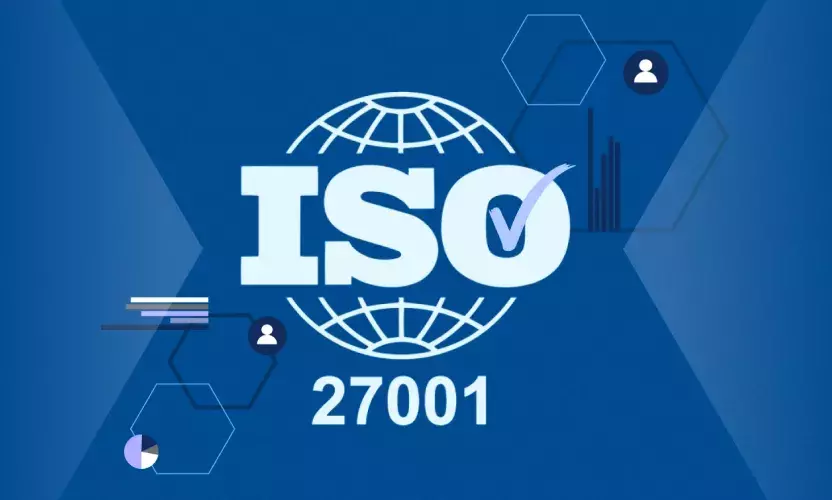
How to Make the Business Case for ISO 27001 Compliance
How Our ISO 27001 Project Began
As a CIO at a mid-sized company, I faced a new challenge when vendors asked for more specifics about our information security and the protocols we have in place to safeguard our sensitive data. Naturally, those questions were directed toward the IT team (and were phrased in ISO 27001 terminology), which was initially challenging because we had limited knowledge of that particular standard.
We felt compelled to provide responses to the vendor community that made sense, but it was clear that we needed to enhance our understanding of information security standards like ISO 27001. By performing additional research, we began our transformative journey toward ISO 27001 compliance, and further details about our journey are below.
Understanding ISO 27001 and Its Real-World Implications
Studying and working with ISO 27001, I quickly realized it went beyond checkbox compliance. ISO 27001 needed to become a way of life within our organization.
I recognized that ISO 27001 compliance had real-world business implications and a revenue protection component. Failing to demonstrate our commitment to security could potentially result in lost business. To get executive buy-in, I explained to the senior leadership team that information security was no longer just a technology matter; it had become a critical business concern. Ransomware attacks and high-profile data breaches that are making headlines further emphasize the urgency to prioritize information security.
Obtaining User Buy-in and Engaging Employees
While top leadership support was crucial, I also realized the importance of obtaining general user buy-in. Education, awareness, and employee training were vital in fostering a security-conscious culture at The Wyanoke Group. We conducted training sessions on security policies and procedures, explaining their reasoning and impact on our organization. Effective communication played a pivotal part in ensuring everyone understood the importance of their role in maintaining information security.
To engage employees early on, we sought their involvement, soliciting suggestions, feedback, and ideas to make them feel more included. We implemented recognition and rewards and gamified the ISO 27001 program using leaderboards and monthly simulated phishing attacks. Employees who correctly reported phishing attempts were entered into a drawing for Amazon gift cards. That approach made learning about security fun-filled and encouraged employees to actively participate.
Engaging the entire company was critical for the success of our ISO 27001 program. We emphasized that the security of our organization was only as strong as our weakest link. We encouraged employees to understand how their everyday work impacted the company's overall security. Designated champions in each department were vital in driving their teams in the right direction. They served as single points of contact for Q&A, fostering a collaborative environment.
Relying on Experts and Leveraging Automation
In hindsight, I realized that we should have sought the help of experts sooner. Initially, we believed we could figure all of it out ourselves. However, that proved challenging since ISO 27001 is an extremely complex standard. Once we involved experts, we transitioned from simply checking boxes to truly living by the purpose of the ISO 27001 standard and adopting a security mindset.
Automation played a significant role in our ISO 27001 compliance journey. The capabilities offered by the Egnyte platform were instrumental in meeting several ISO 27001 requirements. Features such as identifying abnormal user behavior, automated document lifecycle management, data encryption at rest and in motion, secure file sharing, automated data classification, access control, activity monitoring, multi-factor authentication, and continuous compliance monitoring greatly facilitated our compliance efforts.
Where to Start with a Limited Budget
After familiarizing ourselves with the cybersecurity standard, we tackled the areas we recognized and understood. Next, we set up a document library based on the vendor risk assessment questionnaires we received. We learned that you should start small and progress step-by-step to the more problematic areas, which helped identify the areas where we were strong versus where we needed to invest more time and organizational resources.
A good inexpensive way to start on ISO 27001 would be to understand your tech stack, who has how much access, and how users are provisioned and de-provisioned, this helps to keep permission sprawl in check.
An exercise to identify the most critical information assets also helps manage the scope and investment of your ISO 27001 program.
Does ISO 27001 Replace Other Compliance Standards?
As the number of cybersecurity and data privacy standards proliferates, a logical question is: Does ISO 27001 replace other compliance standards? You should approach this from two angles: from a technical perspective and an industry requirements perspective.
Technically, ISO 27001 does not replace other compliance standards; however, from an expense perspective, if business trust is all that is required, ISO 27001 is more than sufficient as it is fairly comprehensive and intensive.
Other than that, a company’s context determines which compliance standards are required to do business in their respective industries. You should always work with leaders across the company- including your legal and compliance departments- to determine which standards apply to your business.
Learn More
Recently, I shared my detailed perspectives on The Wyanoke Group’s ISO 27001 journey in a webinar session. To learn more, please watch and share the event replay below.






